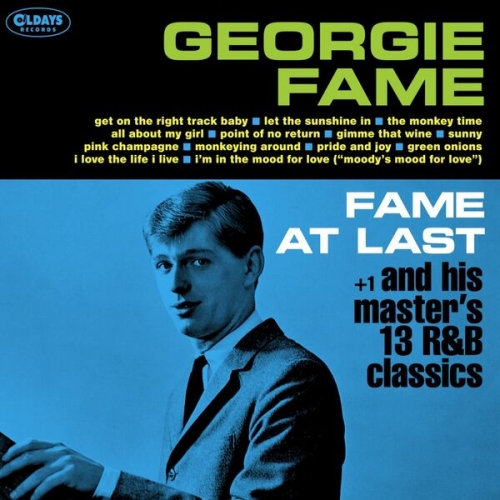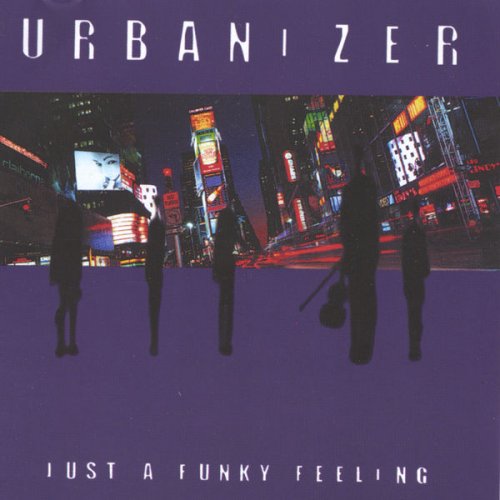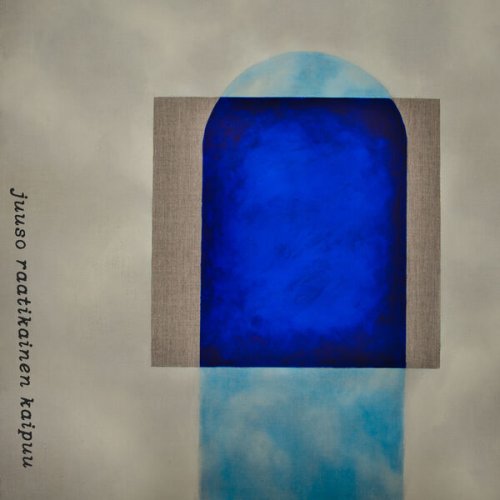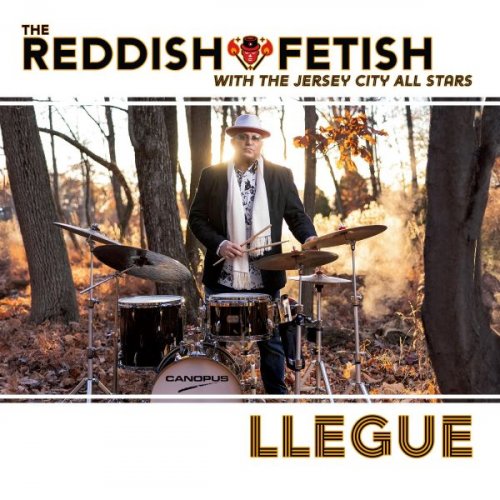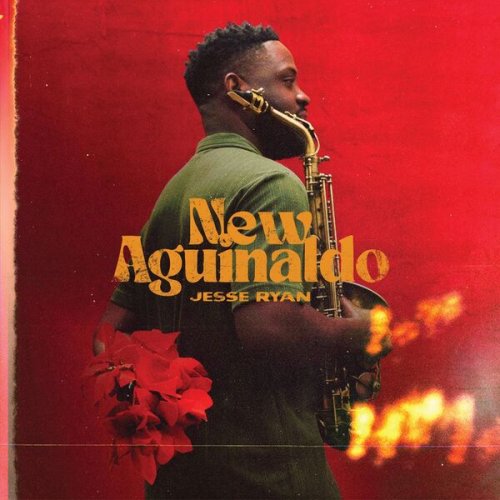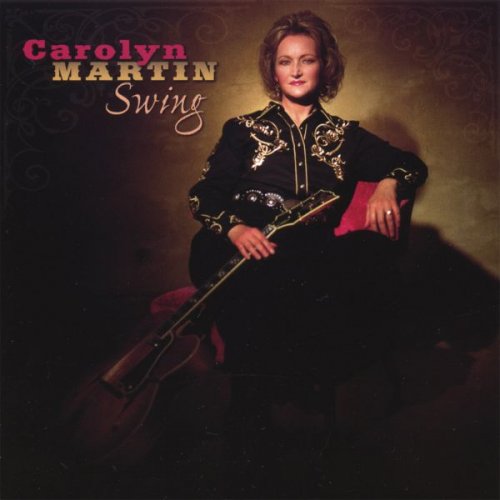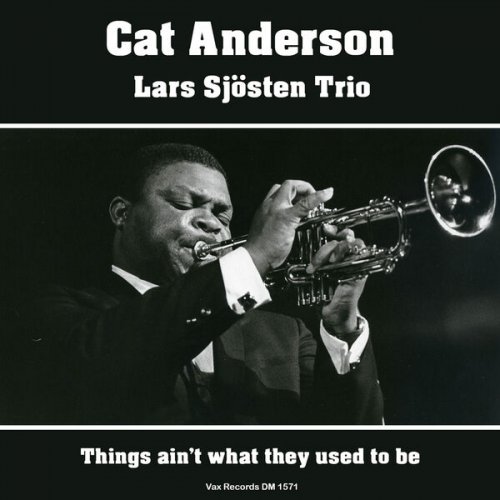Lorenzo Micheli Pucci - Langage Secret (2024)
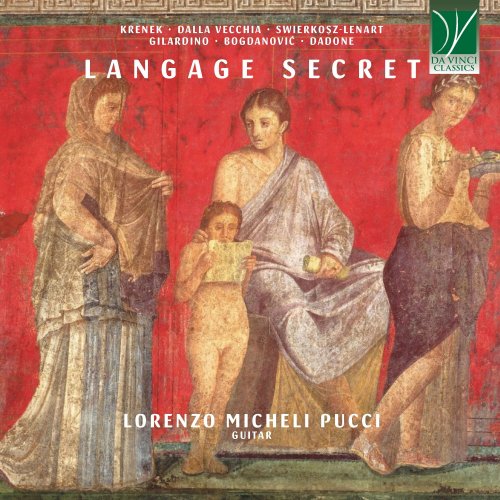
Artist: Lorenzo Micheli Pucci
Title: Langage Secret
Year Of Release: 2024
Label: Da Vinci Classics
Genre: Classical Guitar
Quality: flac lossless (tracks)
Total Time: 01:09:47
Total Size: 245 mb
WebSite: Album Preview
TracklistTitle: Langage Secret
Year Of Release: 2024
Label: Da Vinci Classics
Genre: Classical Guitar
Quality: flac lossless (tracks)
Total Time: 01:09:47
Total Size: 245 mb
WebSite: Album Preview
01. Suite, Op. 164: Allegro moderato
02. Suite, Op. 164: Andante sostenuto
03. Suite, Op. 164: Allegretto
04. Suite, Op. 164: Larghetto
05. Suite, Op. 164: Allegro
06. Variati amorosi momenti: Sereno, sicuro di sé
07. Variati amorosi momenti: Semplice, sapiente, affettuoso
08. Variati amorosi momenti: Ansioso, irrequieto, un poco affannoso
09. Variati amorosi momenti: Con fervore, meno mosso
10. Variati amorosi momenti: Intimo, sussurrato, felice
11. Variati amorosi momenti: Con inquietudine
12. Variati amorosi momenti: Sottovoce, dolcemente
13. Invenzioni Formali: Palindromo
14. Invenzioni Formali: Biscarti
15. Invenzioni Formali: Anagramma
16. Langage Secret - Sonatine: Parallélismes et Symétries
17. Langage Secret - Sonatine: Passacailles des Nombres Premiers
18. Langage Secret - Sonatine: Le Hasard de la Nécessité
19. Sonata No. 1: Allegro ritmico
20. Sonata No. 1: Adagio espressivo
21. Sonata No. 1: Moderato un poco tenebroso
22. Sonata No. 1: Allegro molto
23. Santuario
24. Lubrico
Ernst Krenek (1900-1991) – Suite op. 164
The innovations of the masters of the historical Viennese avant-garde found an echo in the music of several Austrian and German composers after the Second World War: ‘Twelve-tone technique’ thus became the main stylistic feature of a category of musicians who, in this orientation, expressed their moderation and estrangement from the new avant-garde.
It is precisely with a twelve-tone composition that Ernst Krenek (1900-1991) engages the guitar in one of the most arduous concentrations of musical thought that the instrument has ever been called upon to express.
During his long artistic life, Krenek embraced several styles with elasticity and a sense of historical evolution: his first works started from a Romantic-derived idiom (under the direct influence of his teacher Franz Schreker), but in the 1920s – influenced during his stay in Berlin by his contacts with F. Busoni, E. Erdmann and A. Schnabel – he extended his language towards atonality. A contact with the Paris of Stravinsky and the ‘Les six’ group led him to bend some stylistic traits towards neo-classicism, later enriched by jazz influences. The turn towards Schoenbergian dodecaphony dates back to the late 1920s. In his later period, the adoption of the different languages embraced during his career is inspired by principles of absolute freedom, without renouncing his faith in serialism. Last but not least, Ernst Krenek’s musicological expertise should not be overlooked. As a witness of his time, it is embodied in important essays aimed at the distant past and the future.
The Suite op. 164, composed in 1957, is divided into five movements and is Ernst Krenek’s only major contribution to the guitar repertoire. The Suite begins with a page of rapid, nervous multifarious figures (separated by short pauses), characterised by different pronunciations and vivid dynamic contrasts. The second tempo is made up of lyricism and descriptive delicacy, in a monochrome lunar context. The third tempo (à la Alban Berg) focuses on a contrast between gentle manners, generous winks and the alien sonorities of serialism. The fourth tempo reminds the atmosphere of the second, while the fifth is a compendium of familiar words, enlivened by an edgy but effective energy.
Wolfango Dalla Vecchia (1923-1994)
– Variati amorosi momenti
Among the composers born in the 1920s, the most important citation goes to Wolfango Dalla Vecchia (1923-1994), author of the imposing cycle of variations entitled ‘Variati amorosi momenti’ (published by Zanibon in 1980 but composed in 1977): it is a work of considerable instrumental difficulty of execution realised in its final form with the collaboration of Angelo Gilardino (revision and fingering). Although Gilardino made interventions that transformed the genesis of the piece, the composer was not in the least bothered by the reviser’s interventions. Gilardino, an attentive guitarist, tried to make this composition ‘playable’, as Dalla Vecchia did not concern himself much with the technical aspects that constrained the instrument; in fact, the composer from Veneto thanked Gilardino in a private letter. It was also transcribed by the composer himself in a version for string orchestra, which, due to its transparent and subtle texture, retains its guitar origin. Due to the loss of the manuscript, the guitarist Nicola Mazzon (1986), also from Veneto and very close to the figure of Wolfango Dalla Vecchia, took it upon himself to recreate the ‘archetypal’ version that originated from the notes of the string version. Mazzon brings the Suite back to its primordial form by enriching the score in an orchestration at the limits of guitar technique, involving the performer (as with Krenek) in a true orchestral work, requiring extreme commitment as the ordinary and extraordinary resonances of guitar polyphony are lavished on it to the point of exhaustion.
Dalla Vecchia combines seven pieces that, in the most varied of successions, are linked together by recurrences of latent thematic material. It is a ‘cyclic’ suite composed in the classical form of the serenade for strings in the Romantic tradition (Tchaikovsky, Dvorak). A key to interpretation is offered to the performers by the piece’s numerous titles and indications, whose atmospheric details refer to lyrical attitudes inspired by Hermann Hesse’s “Siddhartha” (“Serene, self-confident” is Siddhartha’s arrival in the city, the pompous, sonorous march is his meeting with the procession…), as Dalla Vecchia himself wrote on a 1983 programme (first performance of the string version by the orchestra Pedrollo di Vicenza). But these titles are also a demonstration of his affection for the ancient Baroque guitar repertoire. Their limpid yet elusive structure suggests the definition of ‘variations without a theme’. Whatever their correct formal classification, these are certainly lively, courageous pieces, on the one hand open in clear melodic evidence, on the other developed in dense chromaticism in which the original elements are barely recognisable. The polyphonic fabric is almost often extended, enlarged, but there is no lack (in the third movement) of passages where the voices collide, compressing themselves into narrow dissonances.
Kevin Swierkosz-Lenart (1988)
– Formal Inventions; Sonatina ‘Langage Secret’
In this case, both pieces find their raison d’être within an exquisitely musical poetics devoid of references to other artistic languages. They are pieces born out of the study of Messiaen’s work, from which the composer borrows the modal language. The Sonatina ‘Langage Secret’ consists of three movements.
The first is entitled ‘Parallelismes et Symétries’. Parallelisms are evident in the constructions of the phrases. Symmetries are present around bar 49: bar 50 is identical to 48, 51 to 47 etc. up to bar 63 which is identical to 35. From there the second theme is resumed according to the same symmetrical pattern (bar 64 is the same as 26) until the resumption of the first theme.
The second movement consists of 4 passacaglias, written in tempos that have a prime number at the numerator. Since the tenor is always in 4/4, each passacaglia consists of 4 beats, which is the minimum necessary to make the end of the tenor coincide with the end of a bar. At the end of the Passacaglia in 11/4, the repetition of E is added at bar 17. It is the 5th note of the mode, at bar 17, just to play with prime numbers again. On an aesthetic level, it serves to rarefy the sound material as much as possible before the next ‘clatter’.
The third movement paraphrases in its title a text by Jacques Monod (Le Hasard et la Nécessité), which here becomes ‘The Case of Necessity’. The idea is the random perturbation of an ostinato, up to bar 19. From there, a section opens with a theme on bass A and one on chant B that are reversed, creating modules of 5 bars. Beats 29 and 48 represent two axes of symmetry as explained above about the first movement. From bar 53, the first 19 bars are mirrored in a different way. In order to make the ostinato playable on the guitar, I always thought of a-m-i fingering for the right hand, and for this reason the perturbation elements are always played on the fourth string.
Formal Inventions are a game based on the transposition of linguistic devices into music. “Palindromo” proposes a musical flow that is identical when played from the last note to the first. “Biscarti” takes up an enigmatic scheme that links three words or phrases: the first two have a common segment, while the third results from the union of the previous ones, once this segment has been discarded from them. In this case there are two melodic lines first presented singly, then superimposed after the expulsion of the note G. “Anagramma” re-proposes in several variations a theme whose constituent elements are each time reproposed in a different order.
Dusan Bogdanovic (1955) – Sonata
The last decades of the 20th century and the first years of the new millennium saw the blossoming of a large group of guitarist-composers, devoted to the blending of the most disparate languages and children of the sonic and compositional evolution of the guitar repertoire. Prominent among them is the figure of the Serbian Dusan Bogdanovic (born in Belgrade in 1955), who undertook a first-rate musical and guitar training process abroad, studying (at the Geneva Conservatory) composition and orchestration with Alberto Ginastera and Pierre Wissmer, and guitar with Maria Livia Sao Marcos. It is interesting to note how the young student soon assimilated some crucial stylistic points of his teacher-composers. In fact, the contrapuntal conducting and timbral taste of Wissmer’s ‘Jeune France’ and his works for guitar (above all the splendid Partita) and the Bartokian and expressionist application of elements derived from the Genevan Ginastera’s folk, will be the basis (along with a myriad of different influences) of Bogdanovic’s omnivorous style.
Already in his early production (‘Sept études’ intervallari from 1978), an early example of the codification of new instrumental models can be seen. From here, Bogdanovic’s guitar playing will evolve to the definition of a daring instrumental conception with the “Polyrhythmic and polymetric studies” (1990), an important collection of unpublished models that go beyond the boundaries of the reform carried out by Villa-Lobos. Moving in the footsteps of the rhythmic vitalism of Bartok, Prokof’ev and Stravinsky (to whom he is linked by the same ethnic roots), Bogdanovic makes his debut as a composer with a perfectly guitar-like writing, which transfers the aesthetics and sound material of 20th-century Central European culture onto the instrument. The Serbian master’s continuous stylistic evolution would later lead to a more daring compositional-instrumental conception, linked to polymetric models and metamorphic speculation on sound substance. Using popular rhythmic forms (African, Balkan, Javanese), melodic fragments of pentatonic, modal or belonging to non-Western musical systems, Bogdanovic succeeds in bringing to the surface the different souls of the guitar, depending on the ethnic material used.
The young Bogdanovic’s compositional beginnings were marked by Slavic matrices and the search for a personal style. On the strength of his solid apprenticeship, he immediately paid particular attention to form, which enabled him to incorporate his unpublished writings and his musical energy into a disciplined discourse. This explains his recourse to historicised forms in his first two guitar sonatas (1978 and 1985). As in the previous composition of the felicitous “5 miniatures printanières”, the influence of Stravinsky is also felt in the first sonata, and certainly not with annoyance. Bogdanovic displays in full display his imaginative impulse and a highly refined capacity for construction, which manages to lend his thought the vigour of a resolute, fresh and pleasant immediacy even when the result is the fruit of elaborate research. This double-bottomed formulation of musical ideas is perfectly reflected in the first sonata, written on the apparent pursuit of an impetuous and natural rhythm, but then finely crafted into a precious inlay of dilated and contracted, scattered and accumulated motifs: it is truly a new moment in the history of guitar composition (the piece was written in 1978, when the author was twenty-three years old).
Angelo Gilardino (1941-2022) – Santuario
The music of Angelo Gilardino (1941-2022) takes up with new dignity and awareness the tradition of the guitarist-composers of the 19th century (Giuliani, Sor, etc.), experts as much in guitar practice as in the art of composition. From a stylistic point of view, he follows in the footsteps of the ‘Generation of the Eighties’ (in particular Ghedini and Malipiero) and his music is strongly influenced by the composition lessons he attended with the Vercelli organist Giuseppe Rosetta, the musician who, more than any other, influenced his training. However, it was Mario Castelnuovo-Tedesco who was the first to notice the young Gilardino’s musical talent. Immediately identifying the Asigliano guitarist’s creative abilities, he urged him to devote himself to composition rather than concert performance. In the wake of these great masters before him, Gilardino developed an entirely personal compositional style. This is represented in the ‘Studies of Virtuosity and Transcendence’, a mature synthesis of his earlier works, propelling and harbinger of his later ones. In fact, in the 1970s, the exercise of composing is carried out on a terrain that is already original in its general traits, but immature in its detail and not yet formally capable of recovering constructive models from tradition, rethinking them from scratch: the ideas are many but the thread that unites them is fragile.
On the contrary, from the very first notes, the writing of the Studies marks a clear evolutionary line, which starts from the most excavated guitar subject matter to transcend into pure music: the sixty Studies that Gilardino wrote starting from the second half of 1981 (for a total period of seven years) contain such a generous profusion of instrumental (as well as musical) ideas that they represent for a composer a manual of unpublished idioms, for a listener a mine of auditory surprises, and for the performer a gymnasium of gestures and sounds of inalienable formative value, a fundamental starting point for all Gilardino’s subsequent work and for the very evolution of the guitar.
The music composed by Gilardino after his studies (1990s and early 2000s) expands towards multi-chitar ensembles, other instruments and the orchestra: a metamorphosis of sound matter from six increasingly abstract strings, in comparison to which the orchestral ensembles do not overpower the sound, but become the revealing apostles of the power that the guitar embodies, bringing with them a slow brightening of the melancholic climate.
In the works of the following decades, the composer does not retreat from the dominant melancholy affirmed in the Studi season, but rather details and dilutes it in a gradually calmer atmosphere, as can be seen in the composition Santuario (2017). The structure of this work recalls the form of the ‘passacaglia’ that was well known to Gilardino and in which some of his earlier works had found a happy home. First of all, we have to go back to the ‘Studies’, to the time when he wrote Studio No. 29 (‘Passacaglia’/a hommage to Ottorino Respighi). He has not yet completed the unpublished guitar work by the great Italian composer, but he is on the trail, driven not least by a fondness for the Bolognese composer linked to a shared sensitivity for the Italian musical heritage of the 16th and 17th centuries. In 2004, on the other hand, the dedication to Pavel Aleksandrovic Florenskij (1882-1938) reported in “Ikonostas” is as significant as ever: a figure rediscovered after the end of the Soviet regime, this intellectual lived a tormented and intense wavering between Orthodoxy and Catholicism, between philosophy and science, between art and life. Gilardino composed this “passacaglia” after reading “The Royal Doors”, a work by Florensky himself that deals with the art of painting iconographies, introducing the reader to the metaphysical concepts of light and images. On a stylistic-musical and philosophical level, the passacaglia of Santuario (dedicated to Giovanni Martinelli and Lorenzo Micheli Pucci) can be considered an effective blend of the ancient musical world evoked in the “Studio” and Florensky’s spiritualism. Elements that are moulded through a concise two-voice counterpoint and punctuated, from the very first notes, by a liturgical rhythmic pattern. Santuario consists of ten florid variations, with ostinato that oscillates between the various registers of the polyphonic fabric, and that unravel towards an increasingly dense and virtuosic horizon, employing classical techniques with subtle references to organ writing up to the reckless “falotico”: a section of absolute transfiguration of the preceding material and a search for virtuosity that is not an end in itself but, rather, is intended to underline an ascent towards new extra-guitaristic horizons.
Edoardo Dadone (1992) – Lubrico
Lubrico (written in the autumn of 2018 at the invitation of Alberto Mesirca) takes its cue from the graphic work of the same name by the artist Stefano Allisiardi: a series of ink drawings that increasingly characterise and define the fearsome features of a face whose morbid traits complete the meaning of the adjective, which is not limited to the becoming of the material, but also extends to the subject’s alleged negative moral traits. Thus, the composer tackled a difficult path in guitar technique by identifying two possible obscene traits in his instruments, the continuous gestures on a variable surface and the systematic recourse to idiomatic solutions, capable of intervening on the previously designed formal mechanisms, thus allowing the instrument’s natural incitements to create their own path, parallel or coinciding with the one I had created: possibly incurring the sin of gluttony.
